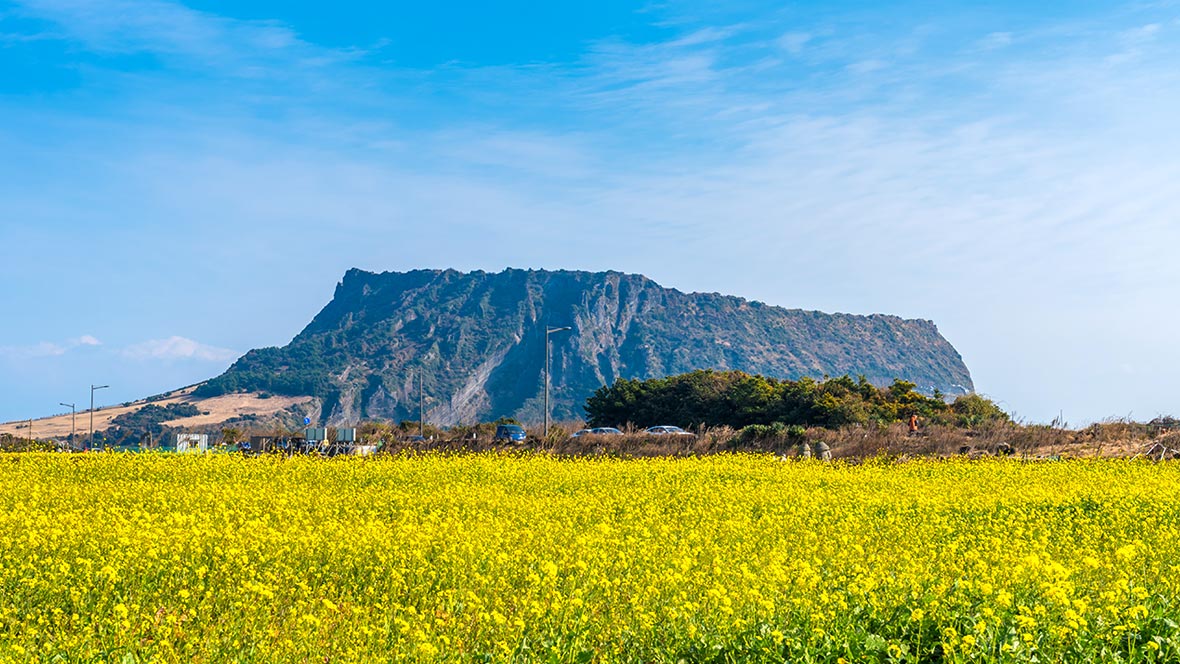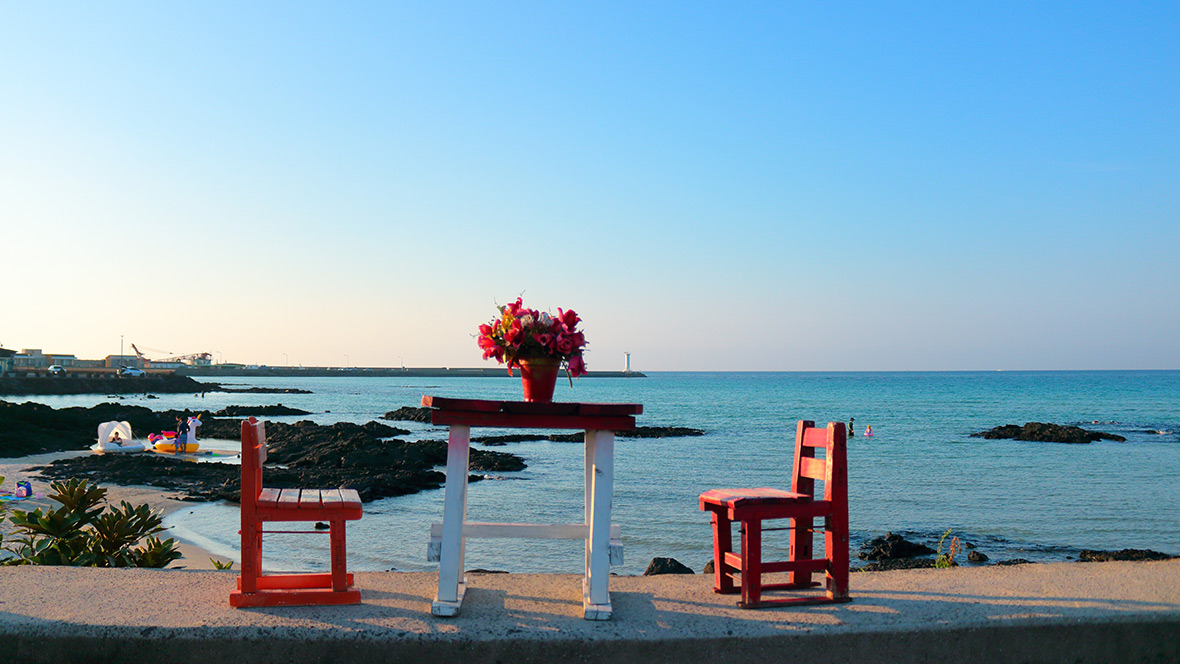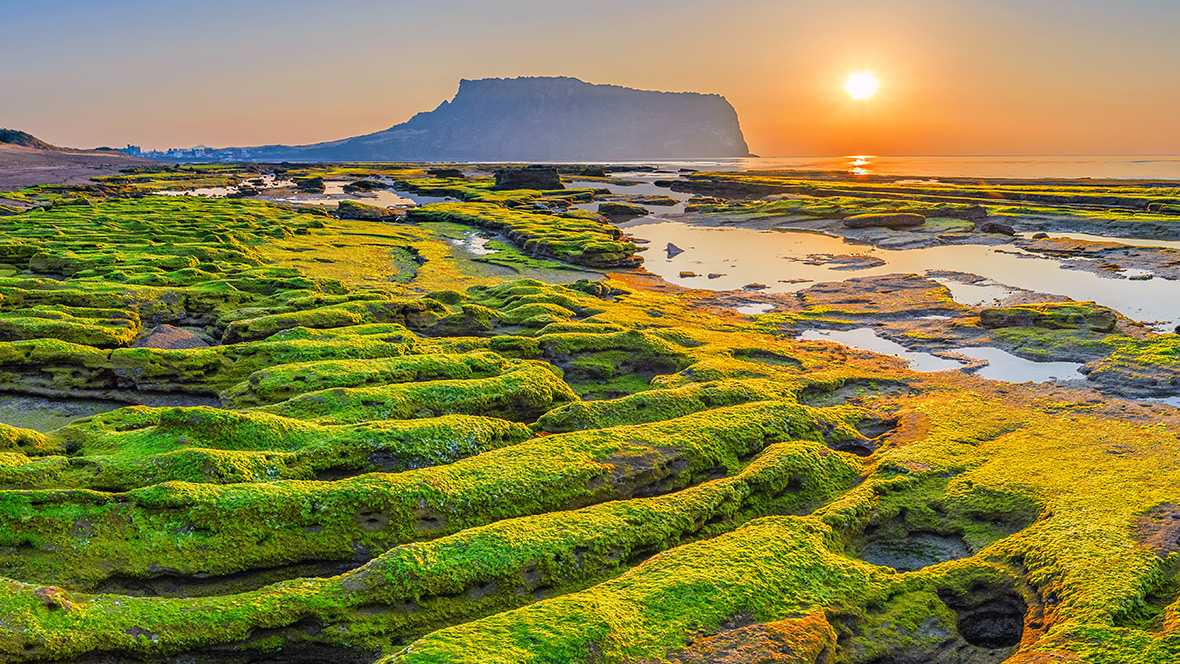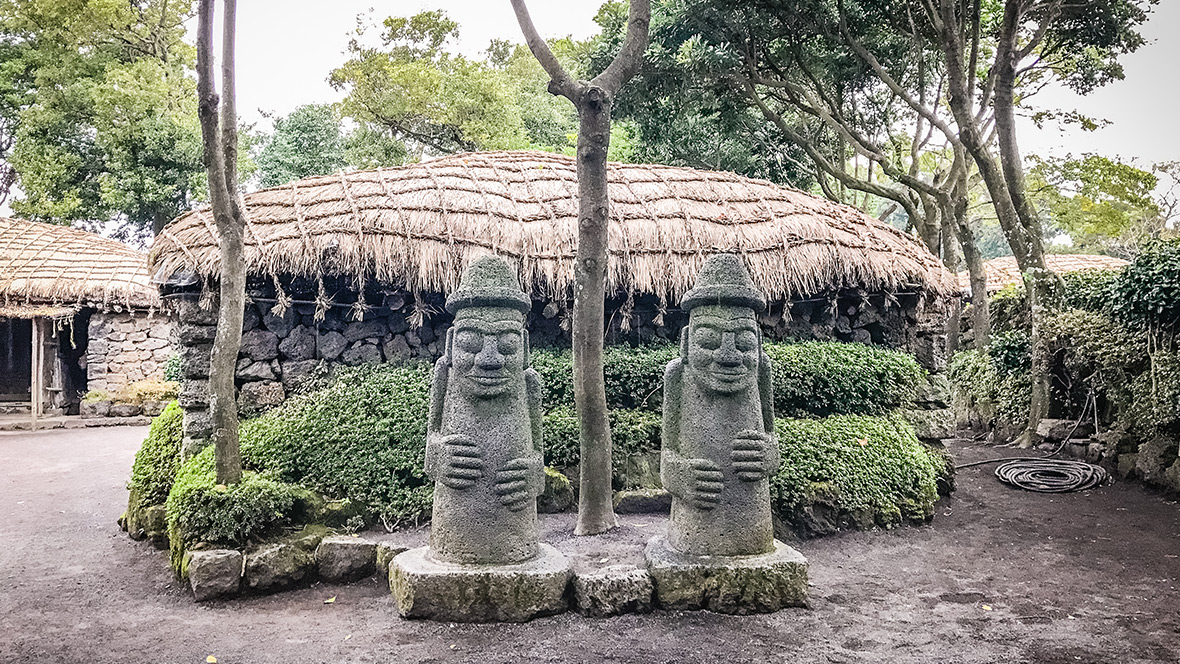 Select
Select
Northeast Asia
-
Korea
-
Japan
-
China
-
Hong Kong, China
Southeast Asia
-
Vietnam
-
Singapore
-
Indonesia
-
Philippines
-
Thailand
-
Cambodia
Americas
-
United States
Oceania
-
Australia
Europe
-
Germany
-
France
-
United Kingdom
-
Italy
-
Türkiye
-
Spain
-
Czech Republic
Mongolia/Central Asia
-
Mongolia
-
Uzbekistan
-
Kazakhstan
Go to Asiana Corporate Plus
A volcanic island located in the southern tip of KOrea, Jeju Island contains unique geographical environments, the history of Tamna-guk, and a unique folk culture – characteristics that cannot be seen...
As of , Provided by WeatherI
Information on tourist attractions and tasty restaurants!
Select Travel Destination
CloseDestination
Destination
Destination
City Description
CloseJeju, a unique geographical environment filled with the history of Tamna-guk
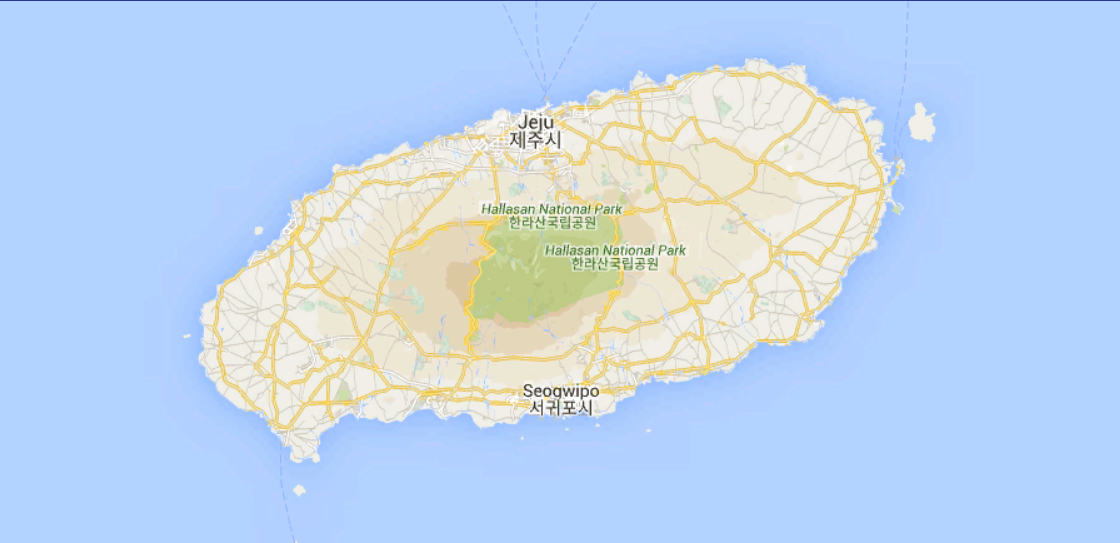
A volcanic island located in the southern tip of KOrea, Jeju Island contains unique geographical environments, the history of Tamna-guk, and a unique folk culture – characteristics that cannot be seen anywhere else. Geographically, there are forests and valleys with abundant animal and plant life centered around Mt. Halla, which is located in the middle of the island. Not only are the elaborate beauty of nature at parasitic volcanoes and craters, caves and meadows dazzling, but also the coastal area has stunning views.
Because of this beautiful scenery, Jeju was named a UNESCO World Natural Heritage Site.
Jeju Island is also often called Samda (literally, “three many”) Island (because it has a lot of rocks, wind, and women). Jeju Island was created due to volcanic activity, one of its characteristics. As such, the people of Jeju have cleared many stones to cultivate fields. Also, because Jeju Island is geographically located on the path of typhoons, the people of Jeju must sometimes battle with the sea. For these reasons, there has been more women, as many men of Jeju struggled and died while fishing out at sea.
Travel Tip
CloseIt consists of 21 regular courses, and each course can take from 3 hours to more than 7 hours.
Suggested Itinerary
Close- Dongmun Market It is the market with the longest tradition in Jeju City. Famous as a traditional market selling agricultural products and fishery products produced in Jeju Island. Especially in the fish market, you can enjoy a lot of fresh raw fish for a small amount of money.
- Jeju National Museum The rounded roof that mimics the warm Jeju-style thatched roof reflects the local color of Jeju. Here, the unique cultural heritages excavated from Jeju are gathered together and displayed in one place.
- Hyeopjae Beach A beach known for its clear waters. White sand with lots of clam shells and a shallow waters makes it a popular spot for families. You can also camp out towards the back of the sandy pine forests.
- Jungmun Tourism Complex It is a world-class comprehensive tourist resort created in Seogwipo City, Jeju Island. Within the complex are a variety of tourist attractions such as the Cheonjeyeon waterfall, botanical gardens, and aquarium, and there are various lodging facilities.
- Yongmeori Coast The shape of the hill on the coast is like a dragon head turning and going into the sea. Down the stone steps, the coastal cliff, which consists of stratified sandstone accumulated and piled up for tens of millions of years, is truly spectacular.
- Jusangjeolli It is a columnar vertical joint mainly appearing in basaltic lava flows. Thick lava (about 1100 degrees Celsius) is formed as a result of the shrinkage that occurs as it flows from the crater and cools rapidly. Jusangjeolli of the Jungmun Tourism Complex is the largest in Korea with a height of 30–40 m and a width of about 1 km.
- Cheonjiyeon Waterfall The waterfall, which is 22 m high and 12 m wide, falls sharply below the cliff with magnificent sounds. The Cheonjiyeon Waterfall Valley is home to the woodland elaeocarpus (natural treasures No. 163) and various rare plants.
- Soesokkak Curious rocks made up of lava and deep water and the dense pine forests are in harmony. It is a static space where only the birds welcome strangers. The temperature is maintained at 18 degrees Celsius, so the water is not cold even in the fall. This is where the trachytes that spewed forth a long time ago on Jeju Island are dispersed, and has high scientific value.
- Jeju Folk Village Jeju Folk Village is where Jeju Island's unique lifestyle comes to life. In addition, you can enjoy various traditional dishes of Jeju at cheap prices in the market place in the folk village.
- Seongsan Ilchulbong Unlike the numerous oreum volcanic cones in Jeju Island, it is a volcanic body formed by the ejection of magma from the water. When you climb to the top, you can see a wide crater, with 99 peaks around the crater. In 2007, it was named a UNESCO World Heritage Site.
- Seopjikoji The coastal scenery is very beautiful with the backdrop of Seongsan Ilchulbong. In April, the height of spring, it becomes spectacular with yellow rapeseed flowers. You can also see pictures of Jeju ponies grazing in the grass above the hill. The scenery is so beautiful that many movies and dramas are filmed here.
- Udo You can go to Seongsan Port in 15 minutes by boat. A miniature Jeju, Udo is said to be the place where you can see the most picturesque views of Jeju. You can see the scenery of Udo at a glance when you climb up Udo Dobong, and you can thoroughly explore the whole island in two to three hours on a bicycle.
- Jeju Kimnyoung Maze Park A pathway is made between tall trees, it is a maze that will confuse you once you enter. Work together with your loved ones to escape the maze.
- Manjanggul It is about 13 km long and is recognized as the longest lava cave system in the world. Rare creatures inhabit the area and the location is highly valued academically. The ‘stone turtle,’ the ‘stone pillar,’ and the ‘wing wall,’ which were formed by volcanic eruptions, are said to be blessed by the gods, and make this place a world-class tourist attraction.
- Jeju Olle Trail The walking tour is made up of total of 21 courses, approximately 420 km in length. You can appreciate the everyday beauty of Jeju Island, and it takes about three weeks to walk all the way to complete all the courses.
- Hallasan It is active volcano of 1,950 m above sea level in the center of Jeju Island. It is the highest peak in South Korea, and at the summit is a crater named Baengnokdam. There are many ‘oreum volcanic cones,’ which are craters, in the surrounding area that are enjoyable to see. Because many get lost when it gets dark, the time is set for each course and season. Therefore, you must depart early in the morning to reach the summit. It is not difficult to climb Mt. Halla, but it takes a long time because the course is very long. Therefore, it is recommended to go up via the Gwaneumsa Temple course in order to view the wonderful scenery.
Magic Boarding Pass
Close- Available Boarding Passes
- Guide for Use
- Affiliates Overview
- Address/Branch Info and Phone Numbers
- Other Notes
